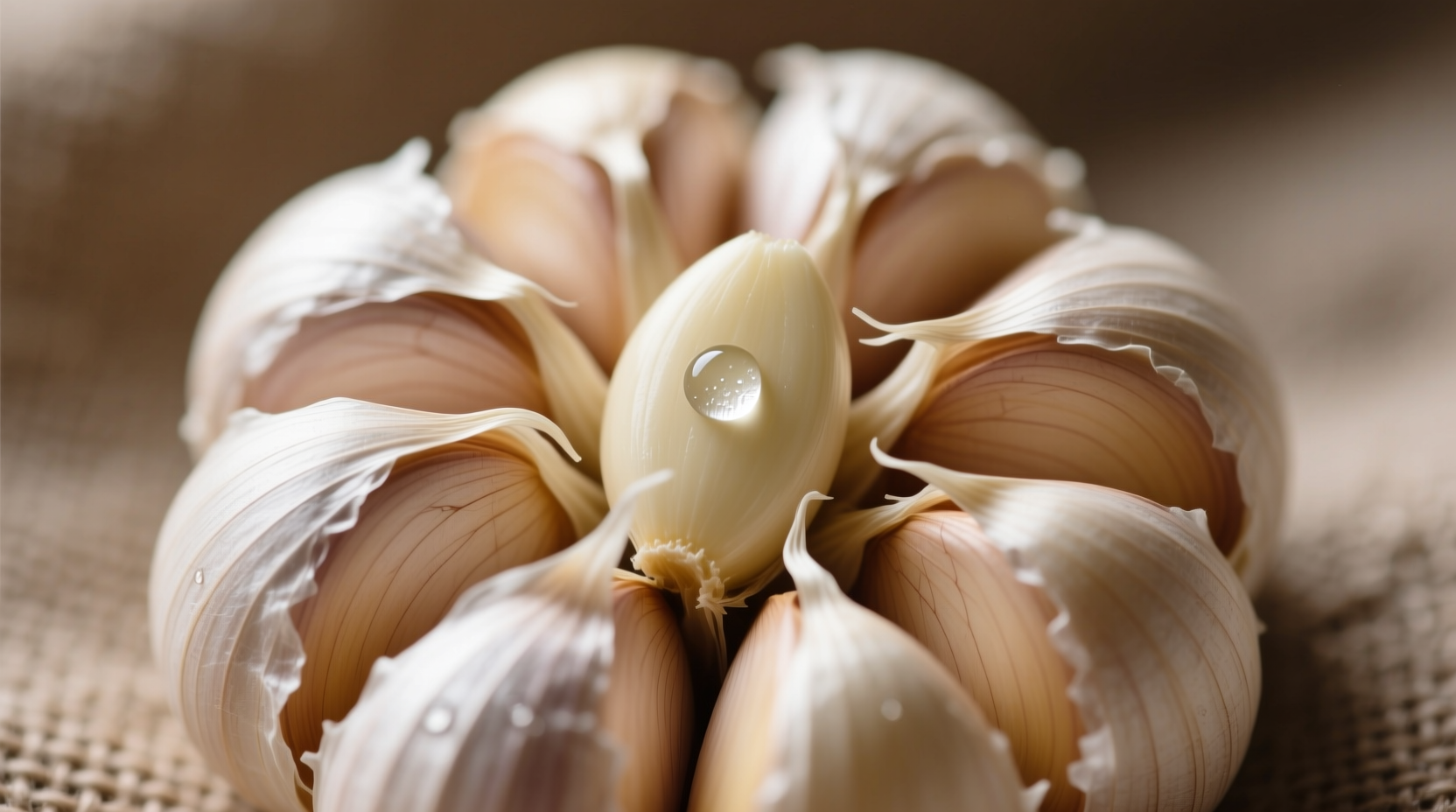If you experience digestive discomfort, skin reactions, or other symptoms after consuming garlic but don't have a true allergy, you likely have garlic sensitivity. Unlike allergies, garlic sensitivity involves non-immune reactions causing bloating, heartburn, or headaches typically within hours of consumption. Management focuses on dietary adjustments rather than emergency interventions.
Garlic transforms ordinary dishes into culinary masterpieces, but for some people, this beloved bulb triggers uncomfortable reactions. Understanding garlic sensitivity—distinct from true allergies—is crucial for maintaining both digestive comfort and flavorful meals. This guide provides evidence-based insights to help you identify symptoms, confirm your sensitivity, and continue enjoying delicious food without discomfort.
What Exactly Is Garlic Sensitivity?
Garlic sensitivity represents a non-allergic adverse reaction to compounds in garlic, primarily allicin and other organosulfur compounds. Unlike true allergies that involve the immune system producing IgE antibodies, sensitivity manifests through direct irritation of the digestive tract or other physiological pathways.
According to the American College of Gastroenterology, food sensitivities affect approximately 15-20% of the population, with garlic ranking among common triggers alongside onions and cruciferous vegetables. These reactions occur because certain individuals lack sufficient enzymes to properly break down specific compounds found in garlic.
| Reaction Type | Immune Response | Onset Time | Common Symptoms | Severity |
|---|---|---|---|---|
| Garlic Sensitivity | None | 1-6 hours | Bloating, gas, heartburn, headaches | Mild to moderate |
| Garlic Intolerance | None | Several hours | Diarrhea, nausea, fatigue | Moderate |
| Garlic Allergy | IgE-mediated | Minutes to 2 hours | Hives, swelling, anaphylaxis | Moderate to severe |
Recognizing Your Symptoms
Garlic sensitivity symptoms typically appear within 1-6 hours after consumption and may include:
- Abdominal bloating and excessive gas
- Burning sensation in the stomach or esophagus
- Recurring headaches or migraines
- Skin flushing or mild rash
- Unexplained fatigue after meals containing garlic
These symptoms often persist for several hours and may worsen with repeated exposure. The National Institute of Diabetes and Digestive and Kidney Diseases notes that food sensitivities frequently present with delayed, dose-dependent reactions that build over time with continued consumption.

Why Garlic Triggers Reactions
Garlic contains several compounds that can cause sensitivity reactions:
- Allicin: The primary bioactive compound formed when garlic is chopped or crushed
- FODMAPs: Fermentable carbohydrates that feed gut bacteria
- Fructans: Specific carbohydrate chains that some people cannot digest
Research published in the Journal of Gastroenterology and Hepatology explains that fructans in garlic ferment in the large intestine, producing gas and triggering irritable bowel symptoms in sensitive individuals. This mechanism differs from true allergies, which involve immediate immune responses.
Confirming Your Garlic Sensitivity
Self-diagnosis can lead to unnecessary dietary restrictions. Follow these evidence-based steps to confirm your sensitivity:
- Keep a detailed food diary tracking meals, symptoms, and timing for 2-3 weeks
- Implement an elimination diet removing garlic for 4-6 weeks under professional guidance
- Conduct a structured reintroduction starting with small amounts (1/8 clove)
- Consult a registered dietitian specializing in food sensitivities
The Academy of Nutrition and Dietetics emphasizes that proper diagnosis requires professional guidance to avoid nutritional deficiencies from unnecessary restrictions. Never eliminate entire food groups without professional supervision.
Practical Management Strategies
Managing garlic sensitivity doesn't mean sacrificing flavor. Implement these chef-approved techniques:
Dietary Adjustments
- Use garlic-infused oil (compounds are oil-soluble but fructans aren't)
- Try black garlic, which has reduced fructan content through fermentation
- Substitute with asafoetida (hing), a traditional Indian spice with similar savory notes
- Use roasted garlic, which breaks down some irritating compounds
Cooking Techniques
Professional chefs often employ these methods to reduce garlic's impact while maintaining flavor:
- Whole clove cooking: Add whole cloves that can be removed before serving
- Delayed addition: Add garlic later in cooking to reduce potency
- Vinegar pairing: Acidic components can neutralize some sulfur compounds
When to Seek Medical Attention
While garlic sensitivity typically causes manageable discomfort, certain symptoms require immediate medical evaluation:
- Symptoms appearing within minutes of consumption
- Difficulty breathing or swallowing
- Swelling of the face, lips, or throat
- Symptoms that persist after eliminating garlic
These could indicate a true garlic allergy rather than sensitivity. The American College of Allergy, Asthma, and Immunology recommends consulting an allergist for proper testing if you experience these symptoms. Skin prick tests and IgE blood tests can confirm true allergies.
Living Flavorfully With Garlic Sensitivity
Many cultures have developed garlic-free alternatives that maintain rich flavor profiles. Consider these substitutions:
- Mushroom powder: Provides umami depth in savory dishes
- Onion powder: Use sparingly as some with garlic sensitivity also react to onions
- Citrus zest: Adds brightness to replace garlic's pungency
- Smoked paprika: Creates complexity in place of roasted garlic notes
Remember that individual tolerance varies significantly. Some people can handle small amounts of cooked garlic but not raw, while others need complete avoidance. Work with a nutrition professional to develop your personalized approach.











 浙公网安备
33010002000092号
浙公网安备
33010002000092号 浙B2-20120091-4
浙B2-20120091-4